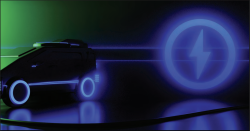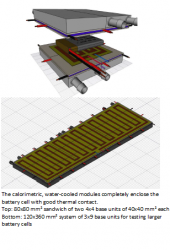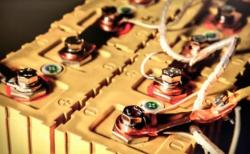The global push for sustainable energy has placed batteries, electric vehicles (EVs), and battery energy storage systems (BESS) at the center of the low-carbon transition. This paper explores how the ASEAN region, along with Australia, is becoming a key player in this shift by examining the progress, strategies, opportunities, and challenges surrounding battery, EV, and BESS development in the region.
Recently, the rising adoption of Internet of Things (IoT) devices and portable electronics has made electronic waste (e-waste) pollution worse, especially when small and low-power IoT devices are single-use only. As such, low-cost and environmentally friendly power sources are in high demand.The technology owner has developed an eco-friendly liquid-activated primary battery for single-use and disposable electronic devices. The battery can be activated by any aqueous liquid and is highly customisable to specific requirements (i.e., shape, size, voltage, power) of each application. This thin and flexible battery can be easily integrated into IoT devices, smart sensors, and medical devices, providing a sustainable energy solution for low-power and single-use applications.The technology owner is keen to do R&D collaboration and IP licensing to industrial partners who intend to use liquid-activated batteries to power the devices.
Battery cells must be tested for performance and operational reliability from the design phase to the production process, to safeguard its safety, reliability and cost. As batteries are prone to temperature-related issues, like overheating and overcharging, there can be extreme spikes in temperature known as ‘thermal runaway’. In order to evaluate the thermal performance of the battery, calorimetric testing can produce data that indicates defects at an early stage and thus help to predict a ‘thermal runaway’ at a later stage. A German research institute has developed a modular, scalable calorimeter to measure the thermal data of batteries of diverse cell sizes. The scalable system is suitable for applications in thermal monitoring from new module designs to new battery materials and quality assurance.The modules are currently in use at the research institute and this calorimeter has German utility model protection. The research institute is searching for partners for the joint further development in research cooperation agreements or for partners interested in a direct license.
Recycling or refurbishing of lithium-ion batteries is crucial in tackling the challenges of climate change and air pollution. While there is the demand for batteries to have more capacity and longer life cycles, lots of time and investment are also required to dismantle and recycle batteries. Precious metal, such as Lithium, needs to be saved while batteries need to be renewable as well.A start-up company has developed a Battery Management System (BMS) circuit, software and process to refurbish small lithium-ion batteries used in wheelchairs, laptops, tablets, drones and more. The technology enables the consumer to achieve significant cost savings and environmental benefits compared to buying new batteries or using other battery recycling methods, with a wide support for different types of batteries from various battery manufacturers. The company is seeking potential partners in Singapore to collaborate through a licensing agreement, whereby the know-how and the process of battery refurbishing will be transferred to the partner.
Renewable energy sources are intermittent, this means that electricity generation using these sources fluctuates. To supply the world with 100% renewable energy, energy storage system is indispensable. Conventional battery technologies such as lithium-ion or lead-acid batteries uses toxic materials, relatively expensive and unsafe.This invention provides a cost-effective and scalable flow battery that can store excess renewable energy using water (H2O) and table-salt (NaCl) as the storage medium, which is safer than lithium-ion batteries as these materials are non-flammable. These materials are also abundantly available and cost-effective.The flow battery is highly scalable. The power (in kW) and the energy storage capacity (in kWh) are decoupled unlike lithium-ion or lead acid batteries. This means that one can design the flow battery with a relatively small power but high energy storage capacity – enough to store energy for days to weeks. The flow battery is simple to manufacture and easy to implement. It requires a stack of ion-exchange and bipolar membranes to perform charging and discharging and water storage tanks.The technology provider is keen to work with potential technology adopters through technical collaboration and licensing agreement to deploy the technology in Asia.






